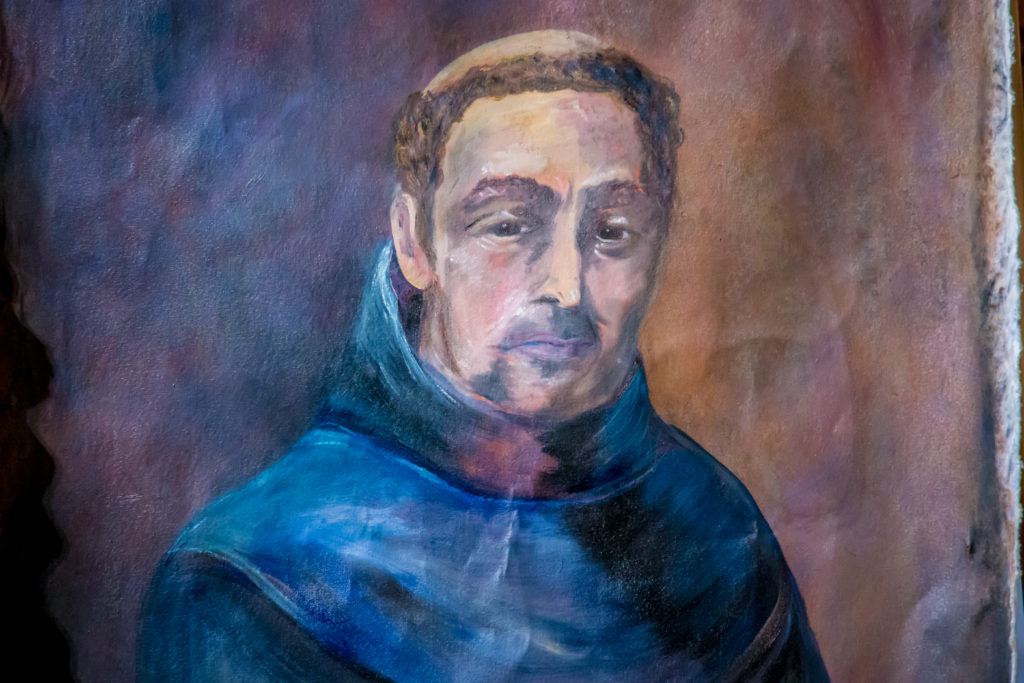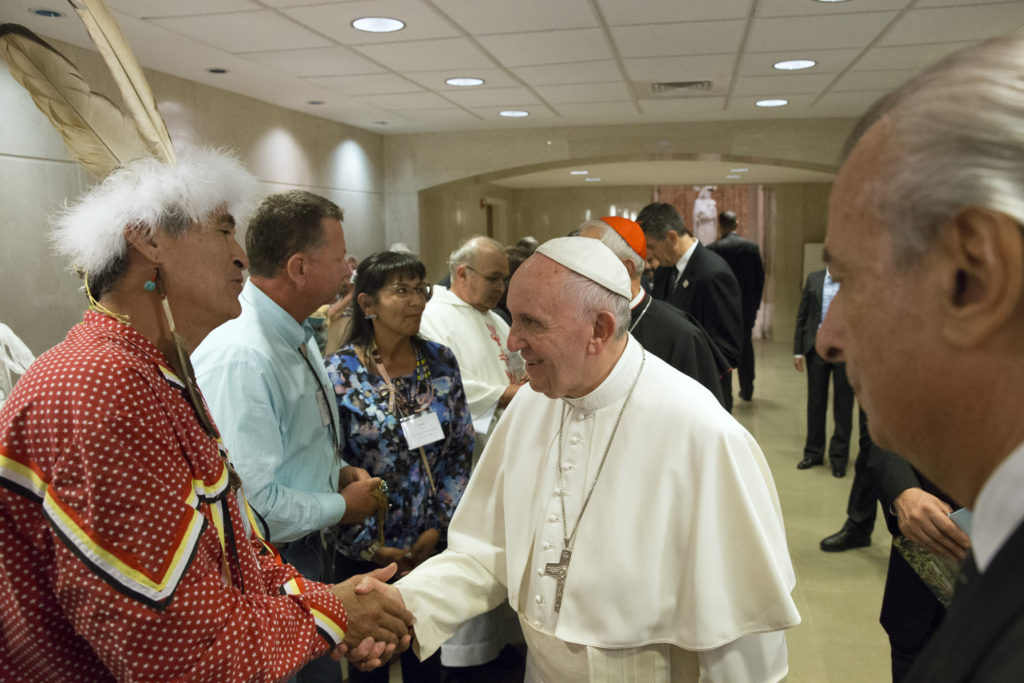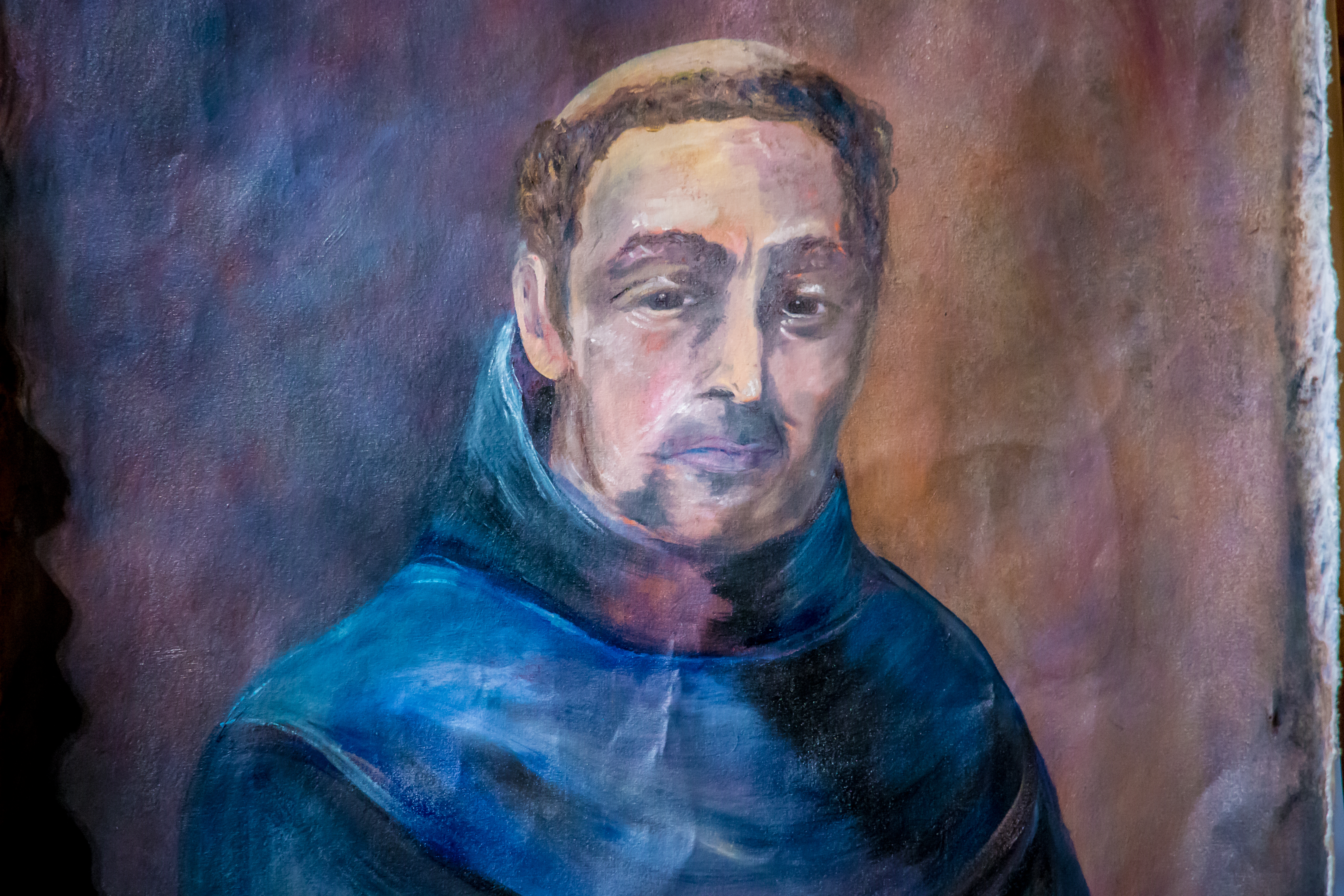
The elevation of Fr. Junípero Serra to sainthood offers important lessons for today’s debates over the treatment of immigrants and other less fortunate people.
That was the message of a thoughtful, balanced lecture by author Jeff Campbell on Fr. Serra’s canonization by Pope Francis. The lecture took place Sept. 21 at St. Mary’s Basilica, as part of a week-long celebration surrounding the Franciscan missionary’s canonization. His canonization Sept. 23 was the first to take place in the United States.
Serra’s critics have focused on hardships suffered by Native people at the hands of the Spanish military and Franciscan priests such.
Native people weren’t forced to be part of the California missions in the late 1700s, Campbell said, but once individuals decided to join, the Spanish soldiers and priests in charge “didn’t want to let them leave.”
Those who departed would be hunted down, brought back, “And they would be punished,” Campbell said. “They were scourged … and put into stocks.”
“That’s a lot of the reason Serra is being attacked right now because the Franciscans did that. They wanted to have that control over the Native Americans.”
“I want to emphasize that I believe with all my heart that Junípero Serra loved these Native Americans. He wanted them to experience Catholicism. He wanted to baptize them. He wanted to teach them the faith and wanted to keep them in the Church.”
His canonization is “going to open up a new dialogue on how we treated the Native Americans … how we treat immigrants coming into this county, how we treat people we don’t agree with,” Campbell said.
“If this canonization opens up that debate, that’s a good thing.”
Junípero Serra was born in Mallorca, Spain in 1713. After years of study, he was ordained at age 24, then later departed Spain for Mexico. He walked 250 miles to Mexico City, then set out for California, arriving in San Diego in 1769, where he established a mission.

St. Serra’s “moment in the sun” came when he returned from California to Mexico City in 1772 and wrote an 8,000-word report to Spanish authorities on changes that needed to be made in the missions, including better treatment for Native people, whom he believed had often been mistreated by soldiers, Campbell said. His requests were granted, and conditions improved.
Several hands shot up when Campbell asked the dozens in attendance whether they were unsure Serra should be canonized. Those skeptics indicated they thought not enough was known about the priest.
Yet most of the audience seemed supportive of sainthood for Serra.
“I think his letters are what saved him,” said Lois Pensiero, referring to St. Serra’s writings, which showed a compassionate interest in Native people. “If you were going to prove something, you would go by what he wrote. What he put on paper said something about the man.”
Franciscan Father Michael Weldon, rector at St. Mary’s agreed, saying, “That was (Campbell’s) point: to open the dialogue up … and re-look at what happened in that era … so we’re able to see it from other perspectives.”
Fr. Weldon rejected “two extremes” in interpreting St. Serra, suggesting on one hand a Hollywood-like Zorro figure who helped backward Natives and, at the other end, a system similar to that of concentration camps.
“We need to retrieve the truth,” Fr. Weldon said.
What was the tipping point for Serra to finally become a saint?
“I really believe the pope wanted to open up that dialogue about how the Native Americans were treated, how people are treated today, even the immigrants,” said Campbell. “I think that’s what’s going to happen. People are talking about it.”
In sum, Campbell said during his lecture: “He was a very, very stubborn man, a very dedicated man. I believe his faith was as strong as anybody could possibly imagine their faith to be.”
“If you think of all the things that happened along the way, (yet) he was able to overcome every obstacle and challenge that he faced. To travel 8,000 miles, back to Mexico City, back to San Diego,” with his greatest accomplishments coming past the age of 60, which was “very old” for the time. “It was his faith to just keep going and never, never look back. That was kind of his motto.”
— By Mike Tulumello, The Catholic Sun







